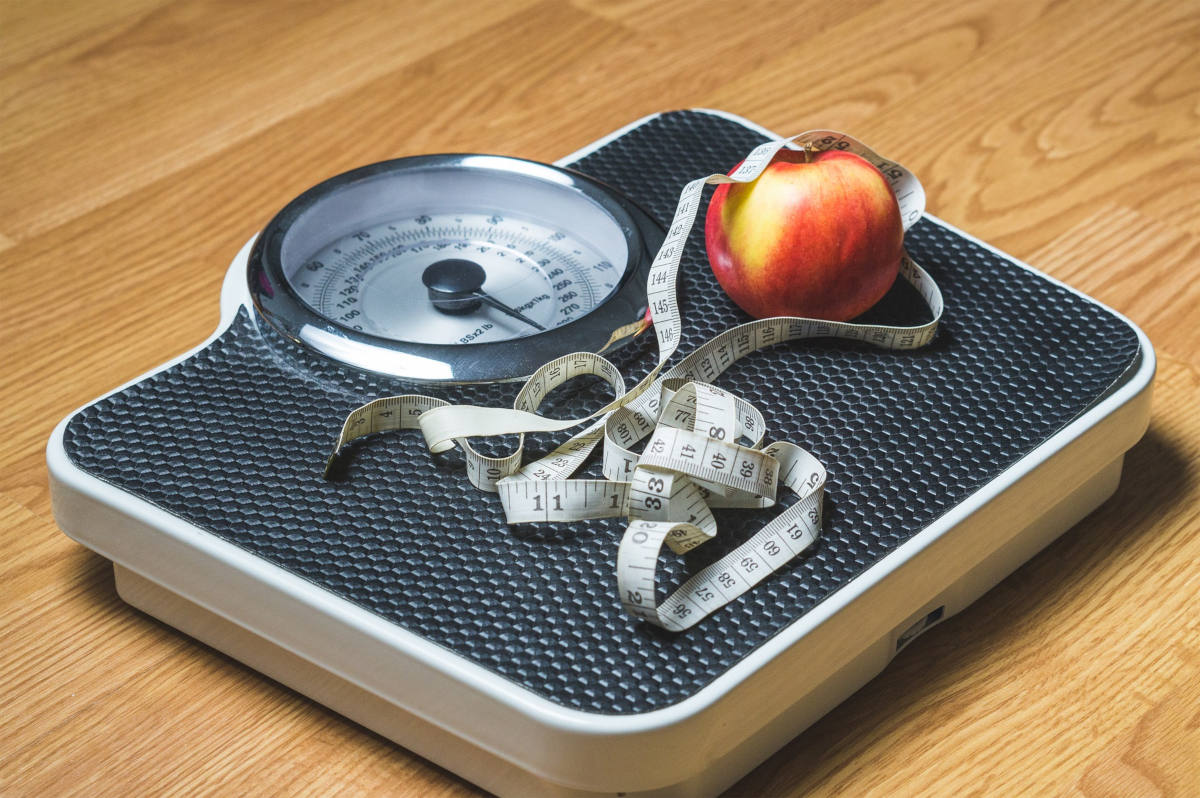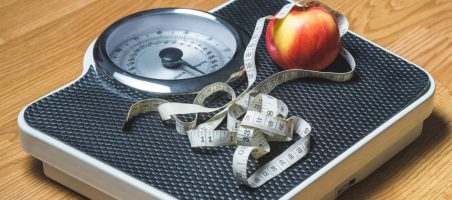The entire purpose of the ketogenic diet is to push the body into ketosis so that it can be an awesome fat burning machine. Ketosis is a natural metabolic process where the body burns fat as its primary fuel source.
For more information about the keto diet, check out this helpful post!
The body won’t switch into ketosis while there are carbs around to burn for fuel. The simplified reasoning for this is that the body is “hard-wired” to burn carbs first. If there’s a shortage of carbs and energy is still needed, the body will then burn fat.
So the trick to getting into ketosis is to heavily limit the amount of carbs you eat. This will force the body to burn fat (that you eat and that you have stored in your body) for fuel.
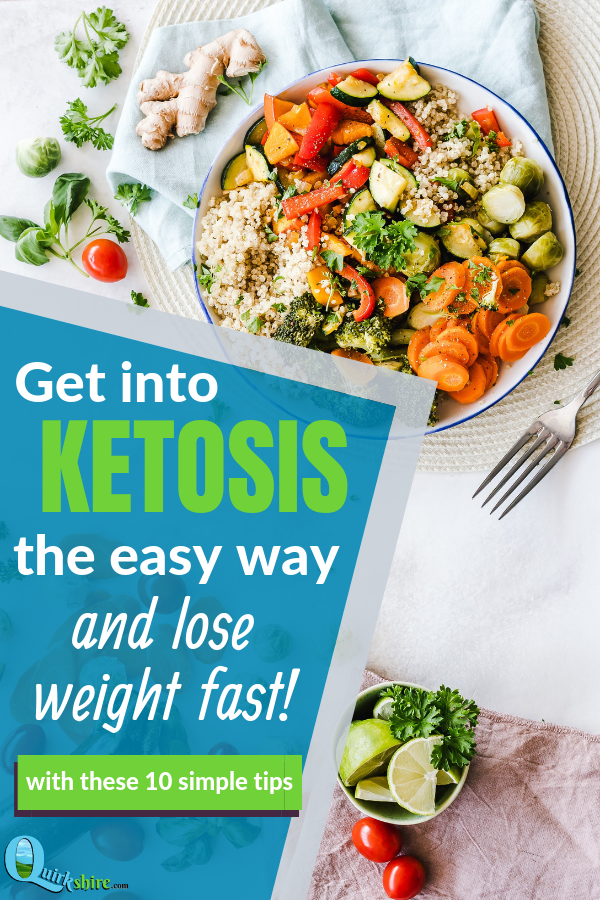
Generally speaking, if you stick to the diet and keep carbs under 25g per day, most people switch into ketosis within 2-3 days. So in this short time period, the body is breaking down fat for fuel. It does take a bit more time for the body to become efficient at this process and run like a well-oiled machine. Once the body gets good at ketosis (usually a week or two), you will be what many people refer to as “keto-adapted”.
Some of the links in this post are affiliate links. If you click the links and make a purchase, I will earn a small commission at no additional cost to you.
Make Your House Keto Friendly
When starting any diet, it’s always a good idea to get that tempting, off-limits food out of the house. Remove all high-carb food items from the pantry: chips, crackers, cookies, bread, pasta, rice, etc. and donate them. If you can’t remove them because other family members will still be eating them, move it all to one cabinet and stay away from it!
Add keto-friendly snacks to your pantry. Some keto-friendly snacks that you can buy include pork rinds, beef jerky (read labels to check for hidden sugars/carbs), cheese crips, high-fat cheese, boiled eggs, nuts & seeds (sparingly), pickles, olives, avocados, bacon, pepperoni, salami, or other lunch meats (check the labels and choose low-carb options).
Read this post for a list of keto-friendly foods so that you know what to re-stock your fridge and pantry with!
Pre-plan your meals. This will help keep you on track in moments of weakness. It’s much easier to fight that urge to make a fast food run if there’s a delicious, keto-friendly meal ready to be cooked in the fridge.
Keeping left-overs in the fridge is another great way to keep you on track when you don’t feel like cooking. Just heat up some left-overs and you’re all set. Easy peasy!
Eat Less Carbs
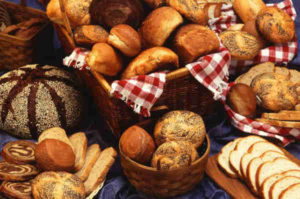
It’s impossible to get into ketosis when you’re eating lots of carbs. So the first and most important tip is to stop eating carbs. Limit the total amount of carbs you eat per day to 25g or less.
This is going to feel strange and even a bit tricky at first. Most of us eat carbs with every meal and as snacks. You will need to re-think meals and snacks.
A sandwich or cheeseburger for lunch won’t fit into this diet – ditch the bread and replace it with lettuce leaves or eat it with a fork. Eat a lunch meat roll-up instead of a sub.
Instead of reaching for a bag of chips, grab some pork rinds or small handful of nuts and seeds. If you’re feeling adventurous, make some pepperoni chips, cheese chips, kale chips, or other keto-friendly alternative!
Pasta and rice can be replaced with keto-friendly alternatives. Instead of serving rolls with dinner, offer a side salad with high fat dressing.
This keto food swap guide will show you how to swap old high carb foods for good low carb foods/high fat foods.
Eat More Fats

Now that the carbs are limited, you need to give your body fat so that it has its new fuel source. Eat foods like nuts, seeds, avocados, eggs, and fatty meats. Add grass-fed butter to everything – mix into scrambled eggs, cook meats in it, smother veggies in it, try bulletproof coffee.
Add MCT oil to your diet. Put it in your coffee or shake, drizzle it over your food, or take it straight from a spoon.
Add coconut oil to your diet. You can add it to coffee or shakes (if you don’t mind a mild coconut flavor), make fat bombs with it, or eat it off of a spoon.
Cook with healthy fats. Coconut oil, ghee, and animal fats such as lard and tallow add a delicious flavor to meals as well as good amounts of healthy fat.
Add healthy fats to salads. Olive oil, flaxseed oil, avocados, nuts, and seeds are great additions your salad – and they taste great too!
It should be noted here to stay away from icky, man-made fats like margarine, canola oil, vegetable oil, corn oil, soybean oil, and peanut oil. They’re not healthy fat options and often contain trans-fats and other nasties that you should avoid.
Keep an Eye on Protein
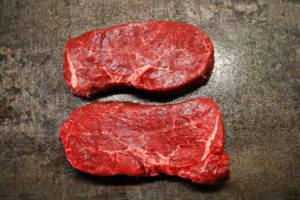
Protein is like the Goldilocks of macronutrients. With carbs mostly gone from the diet, it can become easy to over-eat proteins. It’s important to stick to a normal amount of protein each day. About 15-25% of your total daily calories should be protein.
When you eat too much protein, the excess that your body didn’t need to carry out repairs and other functions gets stored as glucose. This slows down the process of getting into ketosis.
Eating too little protein is also not good, because if the body needs to make repairs and there’s no protein around, it will break down your muscles to get it.
Shoot for the “just right” range of 15-25% (or 0.6 – 1.0 x your body weight in grams) each day. This will give your body the protein that it needs to do its job while preserving your muscles.
Don’t Cheat – Track What You Eat
Following tip #1 helps to prevent cheating at home, but you also need to stay on track when you’re out of the house. Resist the temptation to go to your favorite fast food place for lunch. If you go out to eat with friends at a restaurant, make keto-friendly choices – choose the chicken salad instead of the pasta. Also be aware that there are often hidden carbs in restaurant foods. Lookup the nutrition info for the restaurant meal you want to eat to be sure it’s within your macro allowance.
Track what you eat. This is especially important for the first few weeks or months of the diet, until you get the hang of what your keto meals look like. Tracking everything you eat keeps you on track and honest with yourself. It’s also a great way to make sure that you’re meeting your macro requirements and not going over on the carbs. I love using myfitnesspal because you can customize your macros by percentage, it’s easy to use (there’s an app and website), and it’s free!
Increase Physical Activity
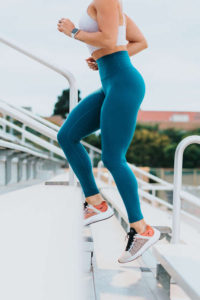
When you’re first starting the keto diet, there’s pros and cons to exercising from day one.
The pros are that it will deplete your glucose stores faster which will help you get into ketosis faster and reduce the duration of keto flu symptoms. The additional exercise will also make weight loss happen faster.
The cons are that it can also make your keto flu symptoms worse. Having a tough case of the keto flu can make you feel like not doing anything, much less exercising.
If you’re feeling up to it, exercising daily, especially short HIIT (high intensity interval training) workouts is very helpful to speed up the process of getting into ketosis.
If you’re already feeling icky, try simple low-intensity activities like walking for 20 minutes. This still helps the body get rid of some glucose stores.
Don’t fret if you’re just not feeling up to exercising at all. You will get into ketosis as long as you stick to the diet, your keto flu symptoms will subside and you’ll start feeling better. Then you can exercise!
Drink Plenty of Water
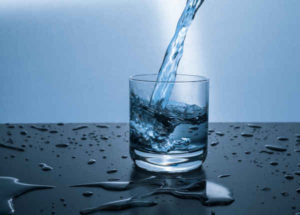
Starting the ketogenic diet is very dehydrating to the body because of all the metabolic changes happening in your body. You pee a lot more (at first) on this diet, which means that your body is flushing out excess water (and electrolytes).
Part of the keto flu symptoms are related to dehydration, so do yourself a favor and drink lots of water! This will help reduce the chances of feeling really yucky during the transition into ketosis.
Replenish Electrolytes
Very important electrolytes are being flushed away with all that water. Sodium, potassium, and magnesium stores become low, which causes an electrolyte imbalance and many of the keto flu symptoms: headache, fogginess, fatigue, headache, etc.
Make sure that you’re replacing all those electrolytes you’re losing. Put more sea salt or pink Himalayan salt on your food (or on your tongue), and eat foods that are rich in potassium and magnesium like spinach, kale, and nuts.
Note that sports drinks like Gatorade and PowerAde aren’t good choices. You can use an electrolyte supplement drops like LyteShow, and HiLyte, or capsules like Maximum Keto Electrolytes if you’re concerned that you aren’t getting enough from your food. The capsules these have vitamin B which will give you a bit of an energy boost, which is nice if you’re feeling sluggish.
Take Exogenous Ketones
Taking exogenous ketones is a great way to help your body get into ketosis in the beginning. This supplement gives your body read-to-use ketones that don’t have to be processed or broken down – it can instantly be used. This means that you will have energy available immediately (which helps you to keep feeling good and avoid keto flu), and it helps your body adapt to using ketones for fuel.
I like to use the powder supplements and mix them into a shake with coconut milk. There’s some great flavors out there (like chocolate, orange mango, black cherry, and raspberry lemonade). It’s great to use when you’re feeling tired or in an energy slump. The brands that I linked here are high quality supplements that taste great!
Stay Away from the Scale
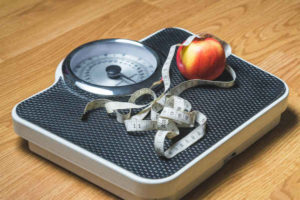
It’s tempting to get on the scale every day to check your progress, but don’t do it. There’s a lot of weight fluctuation, mostly from water loss and/or gain in the first few weeks of starting the keto diet. Prevent the stress and anxiety that comes from the number on the scale not being what you wanted by not stepping on it. This ensures that you won’t become discouraged if you didn’t lose (or even gained) weight.
It’s important to realize that there are so many changes happening in the body during this transition that are not necessarily reflected on the scale. Be patient and give your body time to transition. Remember that the magic really starts happening after you’re keto adapted!
Weigh yourself in the morning on the day that you start, then stay away from the scale for at least 2 weeks.
If you really can’t help yourself and MUST weight every day, be kind to yourself and know that your body is working to transition into a fat burning machine, even if the numbers don’t reflect that hard work yet. Not seeing weight loss during the transition period doesn’t mean that it’s not working or that you did something wrong – just be patient!
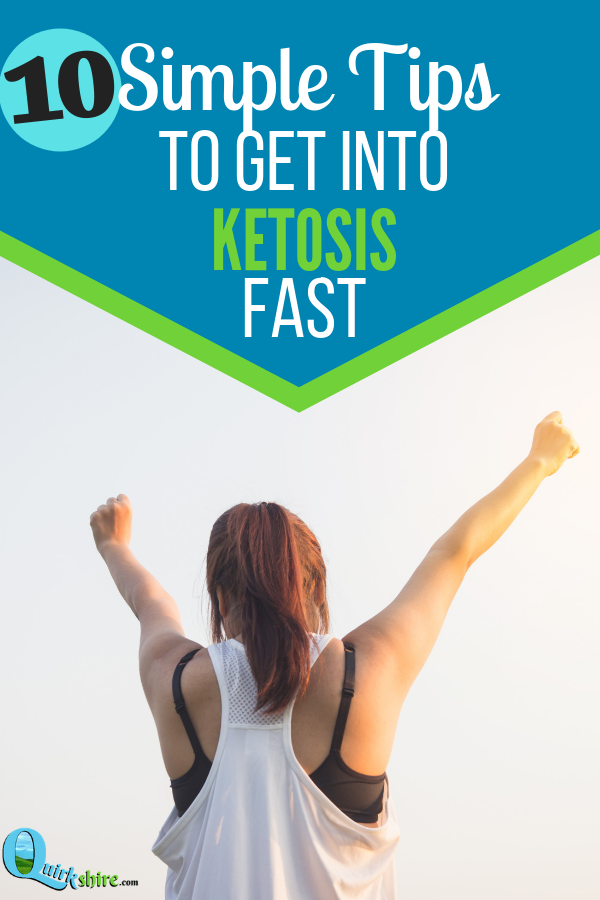
Summing It Up
If you’re diligent and stick to the keto diet, you will be rewarded by becoming a fat burning machine! Staying focused on the end-goal of burning off your stored fat will help keep you motivated on days that you’re having a tough time.
Follow the tips listed here to quickly get into ketosis so that you can start reaping the rewards that the ketogenic diet has to offer!
For more helpful info about the keto diet, check out these posts:
Keto Diet 101: a Beginner’s Guide
Keto Friendly Foods: What to Eat on a Ketogenic Diet
Keto Friendly Substitutes: Easy Keto Diet Food Swaps
Keto Flu: Tips for Fast Relief

